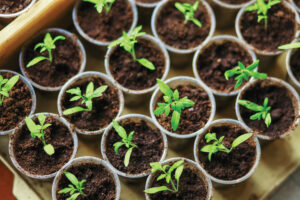Gardening involves many unknowns and a lot of guessing.But, there is one thing you can do to get answers — soil testing. A soil test takes a major portion of the guesswork out of gardening by providing a baseline of data that can also save you money down the road. Fall is an ideal opportunity for soil testing, giving you a window of time to make amendments before the next growing season.
How to collect soil samples
You can collect soil samples from any part of your yard, but ideally, it will be a defined area with a specific function. For instance, collect samples from the lawn, but keep those separate from the vegetable garden samples. Those soils serve different purposes, and they will come with a different set of recommendations from the lab.
When taking a soil sample, take the following actions:
- Remove any turf, mulch or other plant debris from the surface.
- Dig a 12-inch hole for trees and shrubs, 6 to 8 inches deep for gardens and landscape beds, and 3 to 4 inches for lawn samples.
- Take a thin slice of soil down one side of the hole and collect the soil. Make sure to remove roots and debris from the sample.
- Collect a minimum of eight random subsamples from the area you are sampling.
- Combine all the subsamples and break up any soil clumps. Place 2 cups of the combined soil into a sealed plastic bag.
- The soil sample is now ready to send to the lab. Any problem areas may warrant a separate sample.
Where to buy a soil test kit
Store-bought soil test kits do not provide reliable results. Illinois Extension recommends using a lab certified by the Agricultural Laboratory Testing Association. The cost for a soil test varies, but the average soil lab fee is around $20, plus shipping.
For that, you receive measurements of your soil and recommendations tailored to your specified growing environment. You can find a listing of commercial and university soil labs at go.Illinois.edu/soillabs. I suggest shopping around and calling labs for any special instructions.
What to expect from test results
Too few and too many nutrients are both bad for plants. The soil test results will give a measure of soil nutrients as they are at the time you tested. The test will come with recommended actions to take if a particular nutrient is low, or the pH can be adjusted to suit the crop. Therefore, you will know if fertilizer is even necessary, or if you need to focus on a specific nutrient.
I have seen many soil test results, and one commonality is that most tests report good if not excessive amounts of soil phosphorous and potassium. One example is lawns that have seen decades of 10-10-10 fertilizer (Nitrogen-Phosphorous-Potassium). Those may have phosphorous levels so high they block the uptake of other nutrients.
Illinois soil often has ample amounts of phosphorous and potassium without the extra fertilizer. Not only can a soil test save you money by avoiding excess amendments, it can also prevent mistakes that can damage plants.
How do you know if your soil has too much phosphorous? Do a soil test. Want to learn what a soil test can discover? We have an entire website dedicated to soils. Check it out at extension.illinois.edu/soil.










